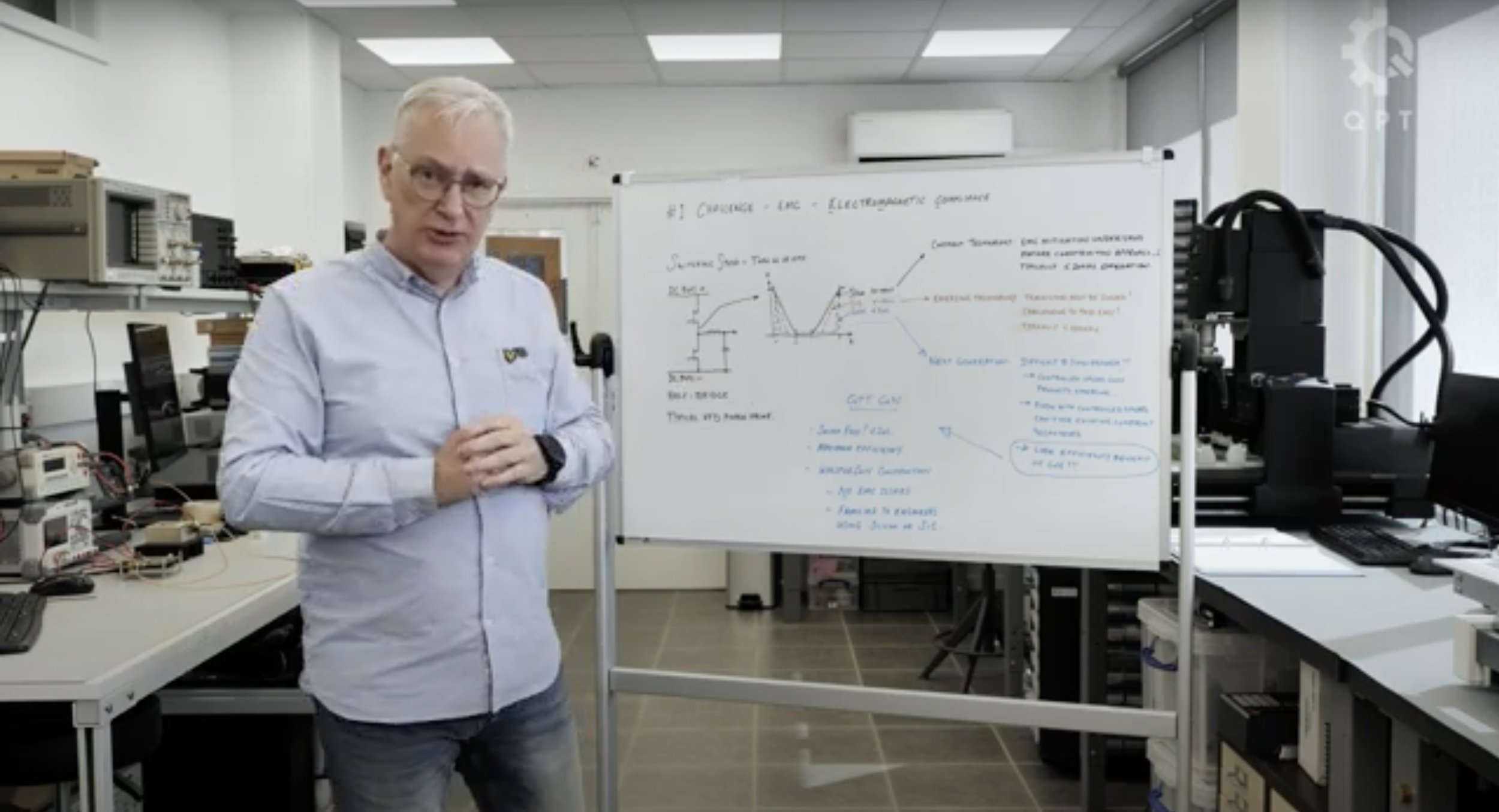Let’s look at the three possible technologies for high power switching solutions.
SiC is stable and reliable but its parasitic PN junction (diode) limits its useful application to about 100 KHz without excessive switching losses. So, this limits how much you can miniaturise a SiC-based converter by running at higher frequency and it is already at about the limit of what can be achieved.
To use integrated GaN devices without resorting to sophisticated RF design, other manufacturers’ Integrated GaN products which have to be throttled back to switching speed of 100 KHz or below because too much EMI and overheating occur otherwise. So actually, worse than SiC. This also imposes the same miniaturisation limits on Integrated GaN as SiC.
QPT-controlled GaN running at its much higher frequencies of ~2 MHz with future versions for up to 20 MHz.
Video: How does SiC compare to current market leading GaN, and QPT’s GaN solutions?
An overview of the current market leaders approach to using GaN at high power, and why these solutions do not enable the full efficiency gains at high power.
Video: EMC challenges with ultrafast switching GaN at high power
Whatever it is, the way you tell your story online can make all the difference.
Losses that occur as switching frequency increases
DIRECT REPLACEMENT OF SIC WITH GAN+DRIVER:
Switching Tr/Tf must be made as slow as SiC in order to use same construction techniques and still pass EMC.
Shows how QPT-controlled GaN runs with hardly any change in efficiency whilst the others’ losses increase dramatically as the frequency increases and can switch even faster!
N.B. The max junction temperature occurs at 650KHz for SiC and 1MHz for Integrated GaN.
Which is really the best SiC replacement?
| Int Drive GaN at SiC Tr/Tf (<100KHz Converter) | Int Drive GaN at fastest Tr/Tf (>100KHz Converter) | QPT-controlled GaN (100KHz – 2MHz converter) | |
|---|---|---|---|
| Re-design complexity | Medium – need to add diodes, EMC qualification | High – need to add diodes, employ advanced RF design techniques, complex EMC qual | Low – turnkey modules, no RF knowledge, no EMC complexities (pre-qualified) |
| Efficiency | Same as SiC | Better than SiC, significantly lower than GaN can achieve | Best that GaN can achieve |
| Thermal | Significantly worse Tjc than SiC, lower Tj (max) than SiC | Slow Tr/Tf causes excessive losses, together with high Tjc, designs are thermally limited | Ultra low Tjc and world leading efficiency, yields cool running designs – reliable, low cost |




